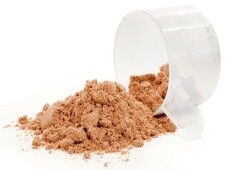The Basics Of Protein Blends
 A protein blend is simply a protein powder that has been made from various different single protein sources such as whey protein, casein protein and egg white protein. The idea of a protein blend came about after sports nutritionists had long debated as to which protein source was best based on the different amino acid profiles, different protein contents, different Biological Values ..etc. They then decided that by making a blend of the different sources of protein they could effectively get the nutritional benefits of all of them in one protein source.
A protein blend is simply a protein powder that has been made from various different single protein sources such as whey protein, casein protein and egg white protein. The idea of a protein blend came about after sports nutritionists had long debated as to which protein source was best based on the different amino acid profiles, different protein contents, different Biological Values ..etc. They then decided that by making a blend of the different sources of protein they could effectively get the nutritional benefits of all of them in one protein source.
Things To Consider In Your Protein Blend
The key to any protein blend is looking at the individual protein sources that make it up and their unique nutritional benefits. For instance casein, whey protein, and isolated soy protein are considered, according to U.S. Food and Drug Administration labeling guidelines, to be complete proteins, which means they have a Protein Digestibility Corrected Amino Acid Score of 1.00. Put more simply this just means they all have an impressive amino acid profile that our bodies are able to digest and use, so all of them would be a good addition to any blend.
Looking more closely at the individual amino acids and you’ll find isolated soy protein is high in the amino acids glutamine (needed for recovery and good immune health) and arginine (which is important to nitric oxide production which is that ‘pumped’ feeling you get in your muscles in the gym) whereas whey protein and casein protein are both higher in branch chain amino acids (these are the amino acids leucine, isoleucine and valine and they are responsible for preventing muscle breakdown and helping increase protein synthesis which is the process by which your muscles use protein to get bigger.) So depending on which amino acid you think is more important to your training may dictate which protein you favor more of in your blend.
Then lastly you also have the absorption rates to consider since casein is shown to be absorbed by the body much slower than whey protein and soy protein which means it’s ideal before bed since it slowly drip feeds amino acids to your muscles throughout the night helping them to recover. Whereas soy and whey are absorbed far quicker so may be better used immediately after training. These are just a few of the differences between each individual single source protein but as you can see by knowing their individual properties you can create a blend that’s best suited to you.
Protein Blend Studies
There have been many different studies conducted into the effectiveness of protein blends but perhaps most interestingly a recent study presented at the Experimental Biology 2012 seminar in San Diego found that a blend of 25% soy isolate protein, 25% of whey isolate protein and 50% casein taken post workout was better for increasing muscle mass than whey protein isolate alone. What was important about this study was that it challenged the traditional school of thought that taking a single sourced, fast acting protein such as whey protein was best for taking post workout.
Whilst scientists don’t specifically know why the blend increased protein synthesis and therefore helped improve muscle mass, they believe it could be to do with the blends unique amino acid profile or the different absorption rates of the protein. Either way such a study confirms that protein blends could benefit you and your training should you find the right blend for you.